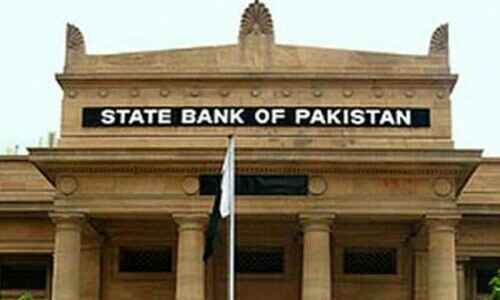KARACHI: Thanks to inflows from the International Monetary Fund (IMF), the State Bank of Pakistan’s (SBP) foreign exchange reserves crossed the $9 billion threshold and achieved a two-year high.
The most recent information regarding foreign exchange reserves was made public by the central bank on Thursday. It revealed that as of the end of the week on May 3, the reserves had increased to $9.120 billion.
The bank released a statement saying, “During the week, the SBP reserves increased by $1.114bn to $9.120bn, mainly due to the receipt of $1.1bn from the IMF as the final tranche under the Stand-By Arrangement (SBA).” The total foreign exchange reserves of the nation were $14.458 billion, of which $5.338 billion was held by commercial banks.
Midway through July 2022, the SBP’s reserves stood at $9 billion, and ever since, they have been steadily declining. The State Bank’s foreign exchange reserves dropped to $4.4 billion in June 2023, putting the nation on the verge of a sovereign default by the conclusion of FY23.
In April, remittances increase by 28%
At the end of June 2023, the nation and the IMF signed a $3 billion SBA that would last nine months. However, in order to control the outflow of dollars, the SBP severely limited imports and the repatriation of profits from foreign investments.
But the SBA’s approval also made room for influxes from other directions. China rolled over a number of payments that were due in CY2023, while Saudi Arabia and the United Arab Emirates maintained billions of dollars in the State Bank’s account.
The rupee was severely under pressure during the period of political and economic unrest, falling to Rs306 versus the US dollar in the interbank market and trading as high as Rs340 on the open market. Following the implementation of a crackdown to halt dollar smuggling, the exchange rate stabilized.
With sporadic oscillations, the exchange rate has remained steady between Rs278 and Rs280 for the past four months.
Remittances increase dramatically
According to a State Bank of Pakistan data released on Thursday, remittances from Pakistanis living abroad rose by 28% in April.
In April, the nation received $2.81 billion, which is 27.9 percent more than it did in April of FY23. During the first ten months of FY24, the nation received $23.85, which is 3.5 percent more than the previous year.
July–April 2023–2024 saw the largest influx from Saudi Arabia, at $5.8 billion. This represents a 5.5% increase from the same time previous year.
The remittances during a 10-month period nearly match the amount needed to service foreign debt in FY24.
Nine months’ worth of current account deficit amounts to almost $500 billion. At the conclusion of this fiscal year, the CAD might equal zero. Remittances are crucial in this circumstance. If the CAD is maintained in check, they will assist the government in borrowing less money for the payment of its foreign debt in the upcoming fiscal year.








